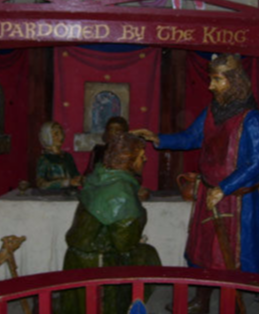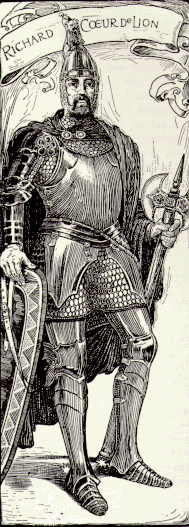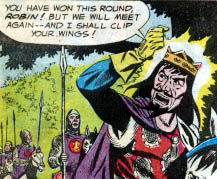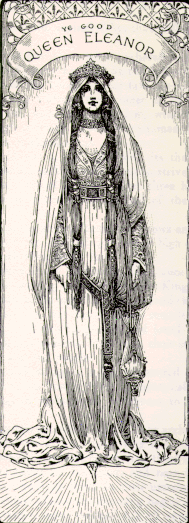Robin Hood meets the King
In a very early story, the king goes into the greenwood to find Robin Hood and a knight that Robin has befriended. The king's men disguise themselves as monks, and the king dresses like an abbot. The "monks" sing as they ride through the greenwood which attracts the attention of a certain outlaw, as planned.
Robin shows up to rob the abbot and the monks. The king, disguised as an abbot, tells Robin that he has just come from the king and presents the royal seal. Robin declares he loves the king above all men. Even the mere mention of the king is enough for Robin to only take half of the so-called abbot's money.
Robin invites the disguised king to a grand feast of fat venison (deer meat), white bread, red wine and brown ale. The Merry Men hold a pleasant archery contest, but anyone who misses the target receives a buffet, a punch, from Robin Hood. Eventually Robin's own arrow lands outside the garland target. He begs the "abbot" to deliver the buffet.
The abbot-king punches Robin and sends him flying. Robin is amazed at the abbot's strength. But just then, the knight Robin befriended recognizes that the abbot is truly the king.
The outlaws submit to the king. The king asks Robin if he has any green clothing that he can give the king. The kings' men dressed in the outlaw's colours of lincoln green and march into Nottingham. The populace is afraid of the visiting outlaws.
On the way to Nottingham, Robin and the king shoot many times. Robin is often on the receiving end of the king's buffets.
So, the king pardons Robin Hood, and the former outlaw enters the king's service.
Many modern stories end here, but in the original tale, Robin grows bored of his courtly role. After 15 months in the king's service, he returns to the forest to resume his life as an outlaw.




Contact Us